AGFC celebrates enduring legacy and future impact of Joe Hogan State Fish Hatchery
ON 07-16-2025
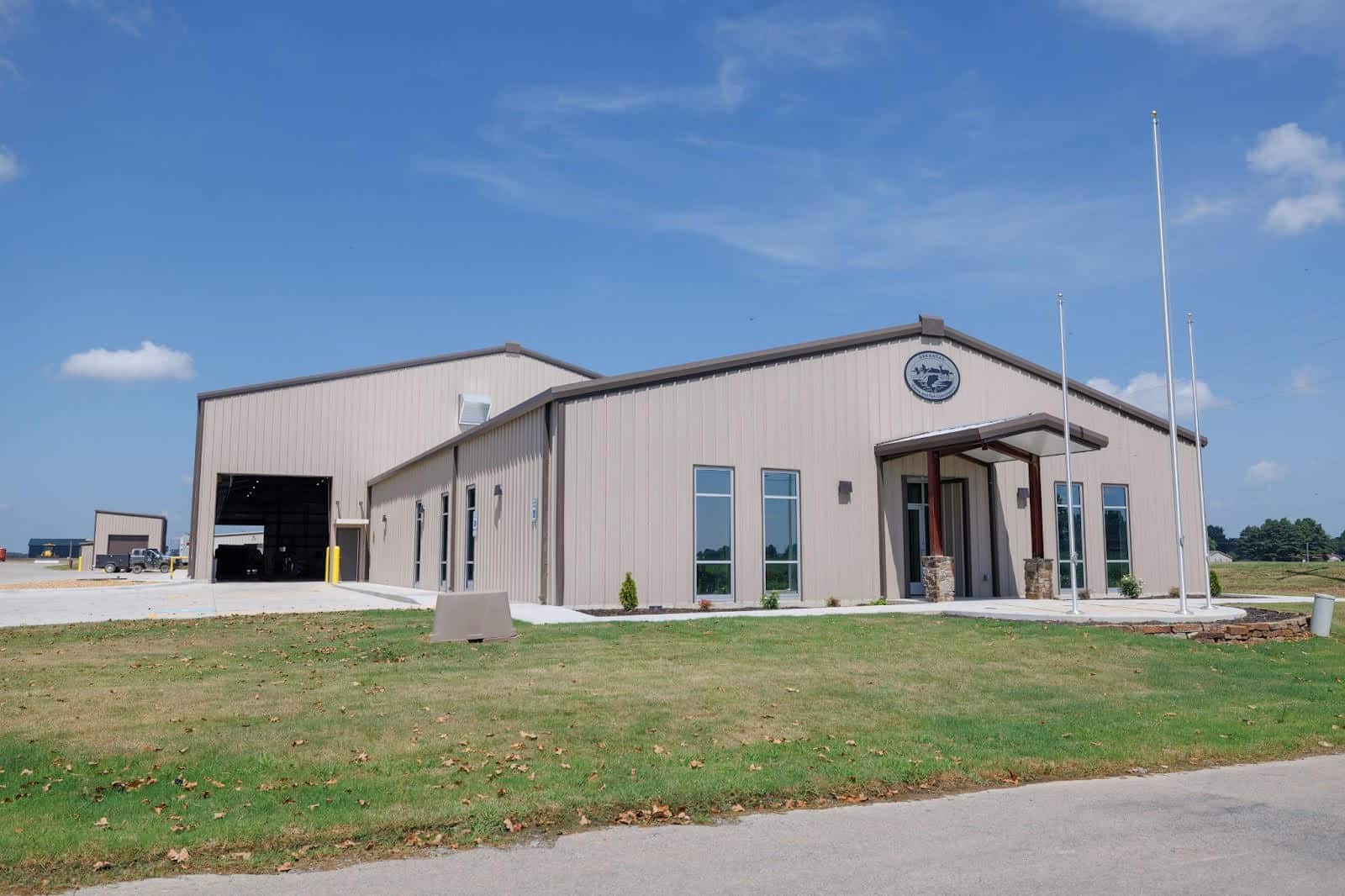
LONOKE — The Arkansas Game and Fish Commission, along with local, state and federal dignitaries, today celebrated the $16 million renovation of the nearly 100-year-old Joe Hogan State Fish Hatchery, the largest public warmwater fish hatchery of its kind in the United States.
As the AGFC undertakes ambitious legacy projects, including major lake renovations and enhancements to greentree reservoirs, the foundational work done at facilities like the Hogan hatchery remains paramount.
“To truly appreciate where we are and where we are going in fisheries management, it’s essential to understand the incredible journey that brought us here,” AGFC Chairman Anne Marie Doramus said. “The Joe Hogan Hatchery is not just a facility; it’s a living testament to Arkansas’s commitment to robust fisheries, built with ingenuity and dedication nearly a century ago.”
The story of the Hogan hatchery began in early 1928, when AGFC Chairman Lee Miles tasked AGFC Secretary Guy Amsler to find suitable land near Lonoke for a fish hatchery. The chosen site, two adjacent rice farms totaling 266 acres, was purchased, and the Commission allocated $17,544 for its construction. Dell Brown of the U.S. Bureau of Fisheries and supervisor of the Mammoth Spring National Fish Hatchery was selected as the superintendent.
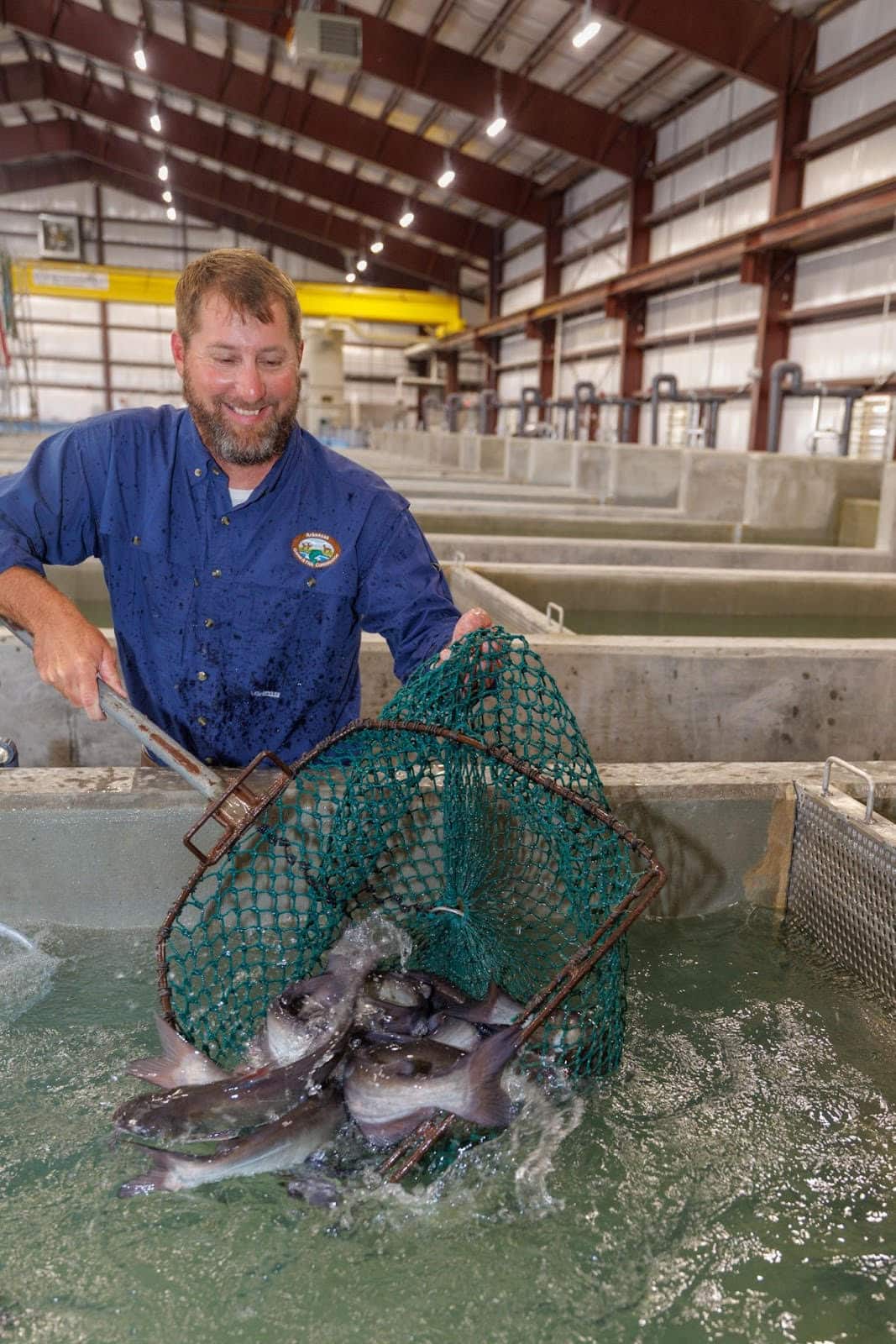
Pond construction commenced in fall 1928. In an era predating modern machinery, the initial ponds were painstakingly dug by mules pulling dirt slips, with laborers using shovels to load dirt onto wagons. The local soil’s excellent clay content proved ideal for creating effective water-holding pond levees. By spring 1929, a few ponds were ready for use, and wild largemouth bass and bluegill from the White River were stocked, yielding the hatchery’s first fish crop later that year.
Joe Hogan was a pivotal figure in the hatchery’s early history and Arkansas fisheries. Hired from the U.S. Bureau of Fisheries to assist Brown during construction in 1928, Hogan assumed the operating manager position upon completion and was superintendent from 1928-60. The facility, initially known as the Lonoke Fish Hatchery, was renamed Joe Hogan State Fish Hatchery in his honor in 1956.
“The hatchery’s impact on fisheries and management statewide is immense,” AGFC Director Doug Schoenrock said. “During the last 25 years alone, this hatchery has produced 370 million fish, totaling 4.8 million pounds.”
Stockings initially focused on largemouth bass, bluegill, redear and crappie, primarily in local ponds, creeks and bayous based on angler requests.
“In the 1950s, stockings took on a much more scientific and targeted approach to benefit anglers across the state, focusing on public waters.”
Predator species like bass, crappie and striped bass remained a focus as the Hogan hatchery pioneered large-scale techniques for spawning and hatching channel catfish. Eventually, it became the flagship facility for all catfish stocked in Arkansas, producing millions of fry annually. Every catfish of the more than 500,000 stocked annually in Family and Community Fishing Program ponds (for fishing derbies) and other public waters began at Joe Hogan State Fish Hatchery.
With this groundbreaking renovation, hatchery staff will be able to increase output and better manage the delivery of multiple game fish species while greatly reducing the facility’s water uptake.
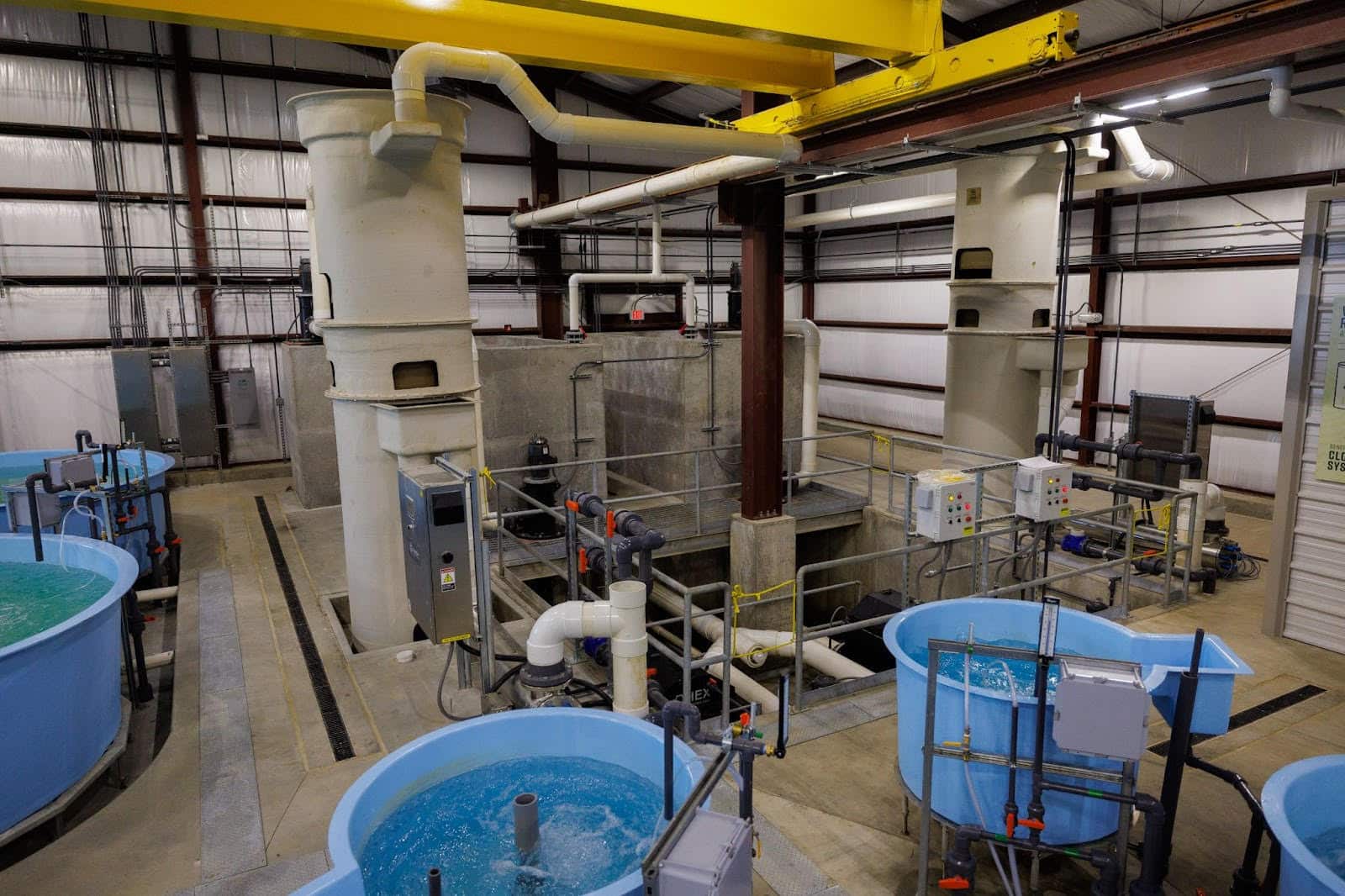
AGFC Deputy Director Ben Batten explained that the renovation includes a large water reuse system, where water drained from ponds is filtered and then sent back into the hatchery rather than flowing out of the system.
“Seventy percent of the 200 acres of ponds on the hatchery can reuse water, and more than 90 percent of the water inside the hatchery building can be filtered and recycled,” Batten said. “Historically, water was pumped from the Sparta aquifer through wells, fish were produced and the ponds would drain into ditches where it was lost. This facility is expected to save more than 517 million gallons of water per year that would have otherwise been lost. This is equivalent to the entire water usage of the entire population of a city the size of Mountain Home.”
Modernized lighting and temperature controls at the hatchery will also enable fish stocked by the AGFC to have a head start on their competition. In 2020, the hatchery transitioned from producing northern largemouth bass to Florida bass. This shift, aimed at enhancing trophy bass potential in specific lakes, has resulted in the hatchery stocking more than 1 million Florida bass fingerlings annually.
“By manipulating lighting and temperature, we can spawn Florida bass earlier than their counterparts in the wild,” Batten said. “This will allow them to be larger than wild-spawned fish when we stock them and greatly increase their chances of survival. In the case of Florida bass, this allows them more of an opportunity to contribute trophy bass genetics to the bodies of water where they are stocked.”
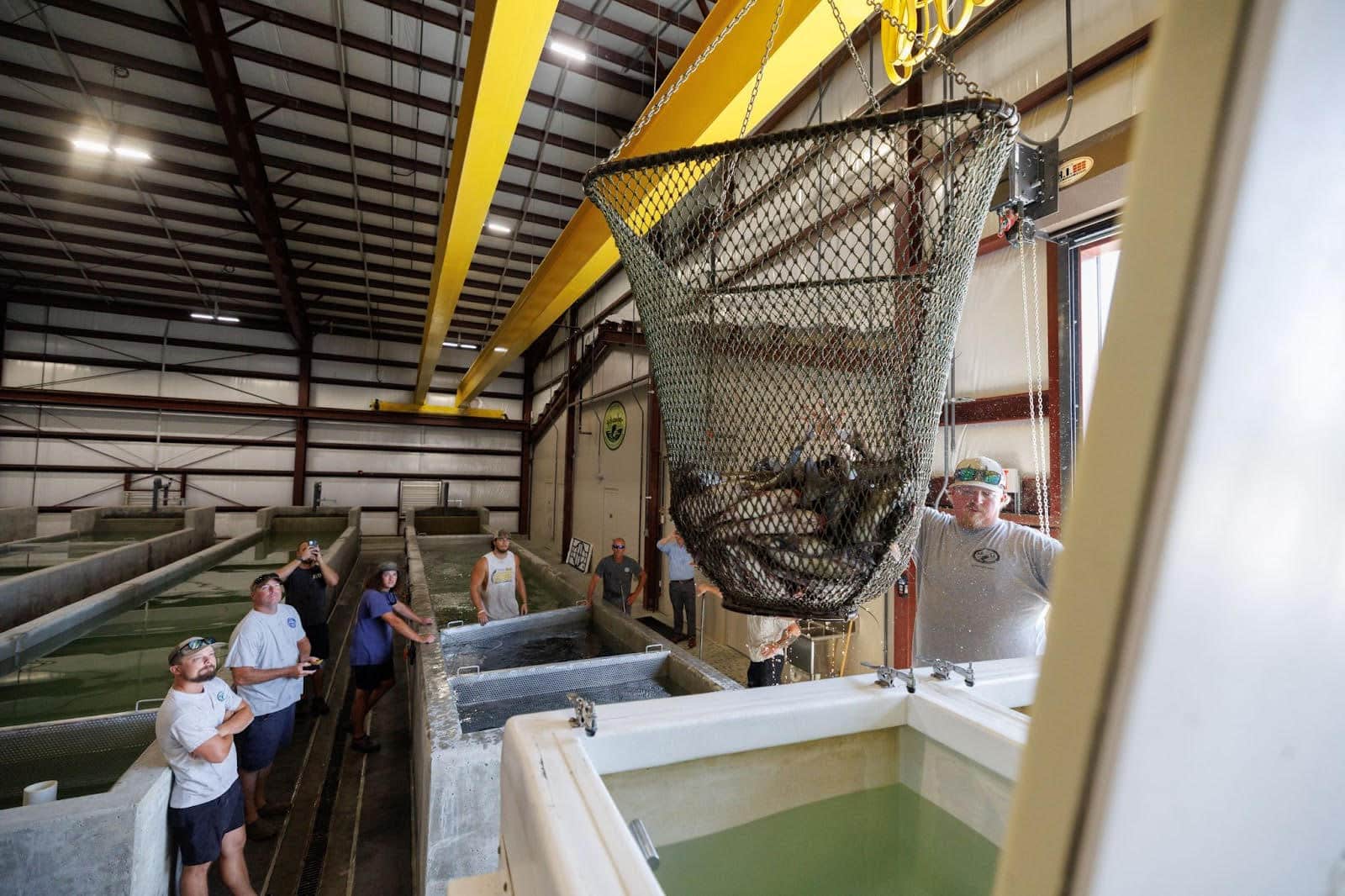
Another vital role of the Hogan hatchery and other state hatcheries is providing fish for the re-establishment of renovated lakes. Recent successful examples include White Oak Lake, Lake Monticello and Lake Poinsett. In 2023, more than 13,000 pounds of forage species, including fathead minnows, threadfin shad, bluegill and redear, were introduced into Lake Monticello to jump-start its fishery, which is now thriving. Lakes Conway and Wilhelmina will soon benefit from fish produced at this hatchery following their renovations.
The Hogan hatchery stands as a testament to the AGFC’s enduring commitment to conservation. Beyond its critical role in supporting recreational fishing, the hatchery serves as a hub for pioneering fish culture techniques and contributes to the scientific advancement of fisheries management. With its latest renovation, it’s poised to lead the AGFC into the next generation of aquaculture and set the standard for state-owned fish production.
####
CUTLINES:
BUILDING
The AGFC’s Joe Hogan State Fish Hatchery is the largest public warmwater hatchery of its kind in the nation. AGFC photo by Mike Wintroath.
CATFISH IN RACEWAY
New raceways will increase efficiency in growing and transporting many species of game fish, including catchable-sized catfish. AGFC photo by Mike Wintroath.
PIPES AND TANKS
The facility’s new water reclamation system will conserve more than 517 million gallons of water each year. AGFC photo by Mike Wintroath.
LOADING FISH IN TRUCK
Overhead cranes are only one of many improvements the AGFC has committed to its near-100-year-old hatchery in Lonoke. AGFC photo by Mike Wintroath.
Recent News
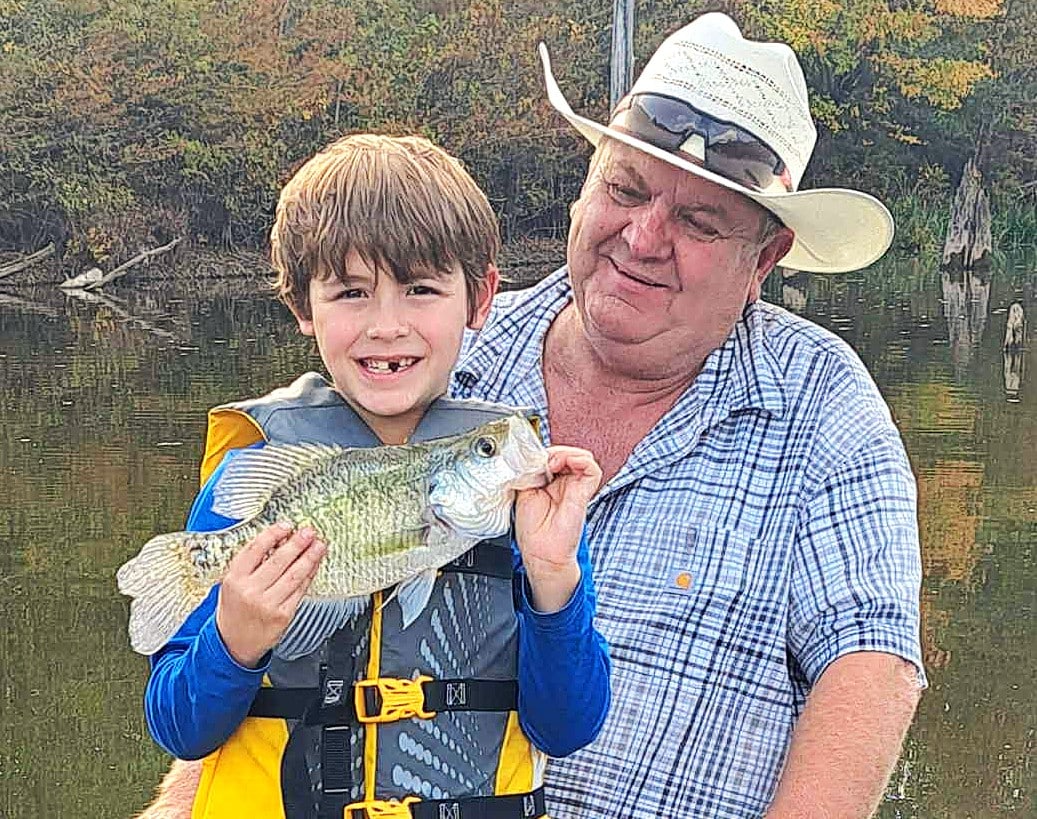
Arkansas Wildlife Weekly Fishing Report
Dec. 4, 2025
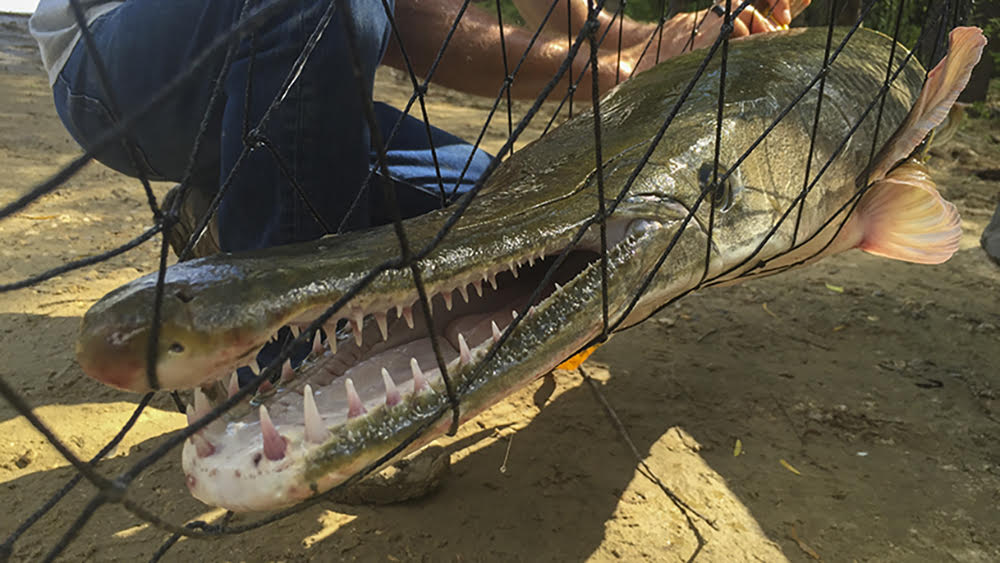
Apply for a 2026 Alligator Gar Trophy Tag
Dec. 4, 2025
Subscribe to Our Weekly Newsletter E-mails
Don’t miss another issue. Sign up now to receive the AGFC Wildlife Weekly Newsletter in your mailbox every Wednesday afternoon (Waterfowl Reports are published weekly during waterfowl season and periodically outside the season). Fishing Reports arrive on Thursdays. Fill in the following fields and hit submit. Thanks, and welcome!
